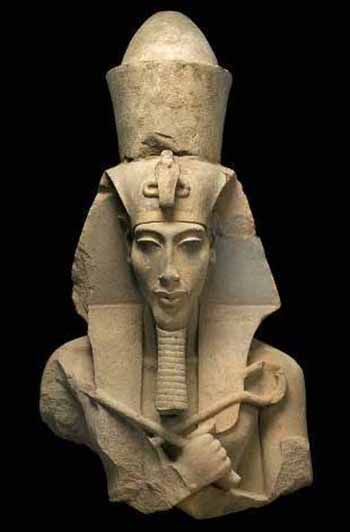
18th Dynasty
Perhaps the height of Egyptian wealth and power came between 1550 and 1290 BC. The dynasty began with the expulsion of the Palestinian Hyksos rulers from the north of Egypt by King Ahmose I - an event that may have inspired the Biblical story of the Exodus. Carrying forward the momentum of this act, subsequent rulers, in particular Thutmose III, established an empire of client states in Syria-Palestine, and dominions stretching towards the heart of Africa. War booty and lively international trade founded on Egypt's highly productive gold mines made Egypt a major world player.
Around 1350 BC, however, King Akhenaten (formerly known as Amenhotep IV - see above) turned Egypt on its head by abolishing all the nation's gods, and replacing them with a single sun-god, the Aten. The new faith was accompanied by a radical new art-style, as seen in the statuette above, currently owned by the Louvre.
The cult of Aten, however, barely survived the death of its patron. Within a few years, orthodoxy had been re-established and Akhenaten's very dynasty had died out, leaving the throne to a series of generals, the last of whom, Ramesses I, was the founder of a new 19th Dynasty.


